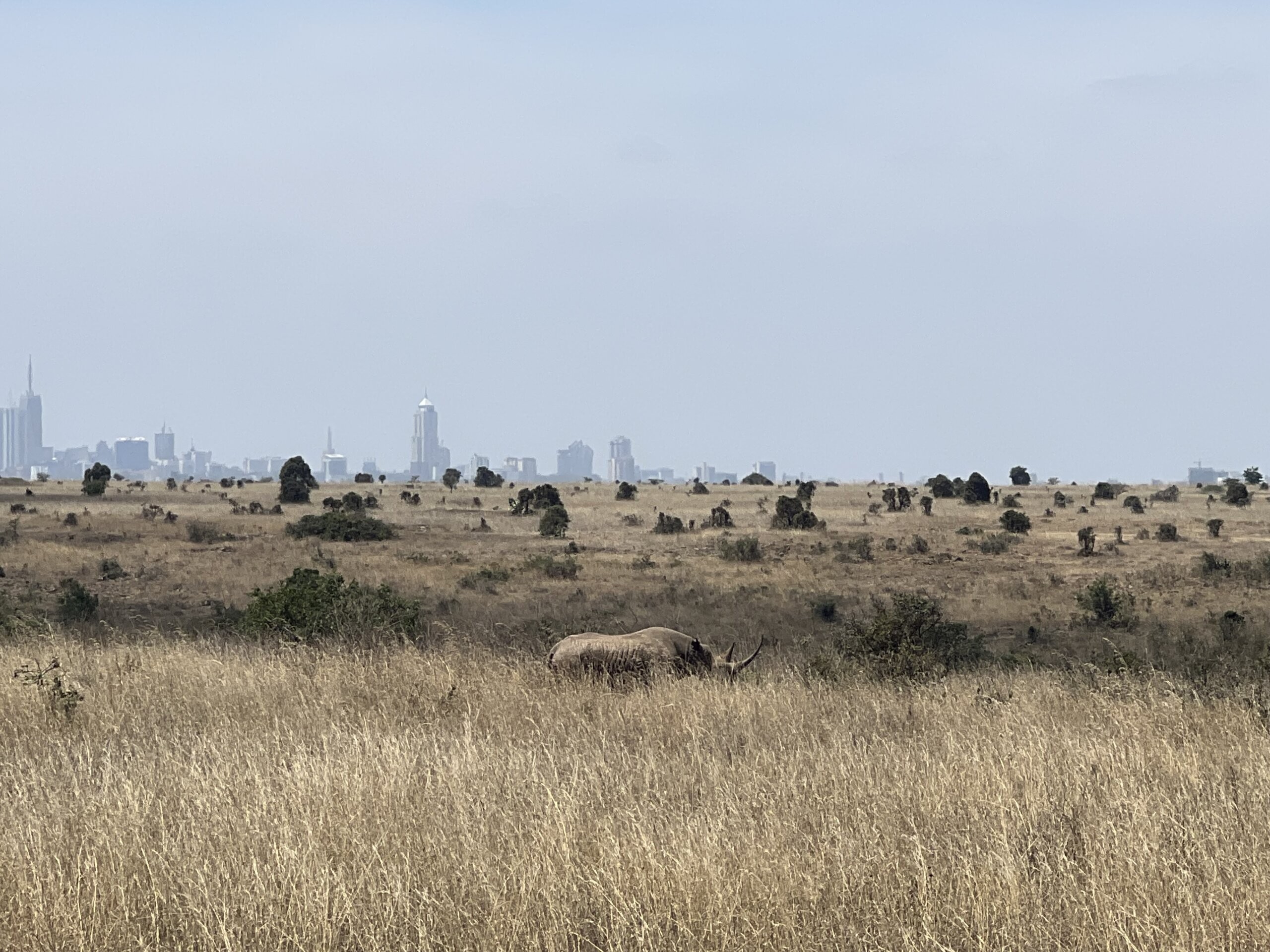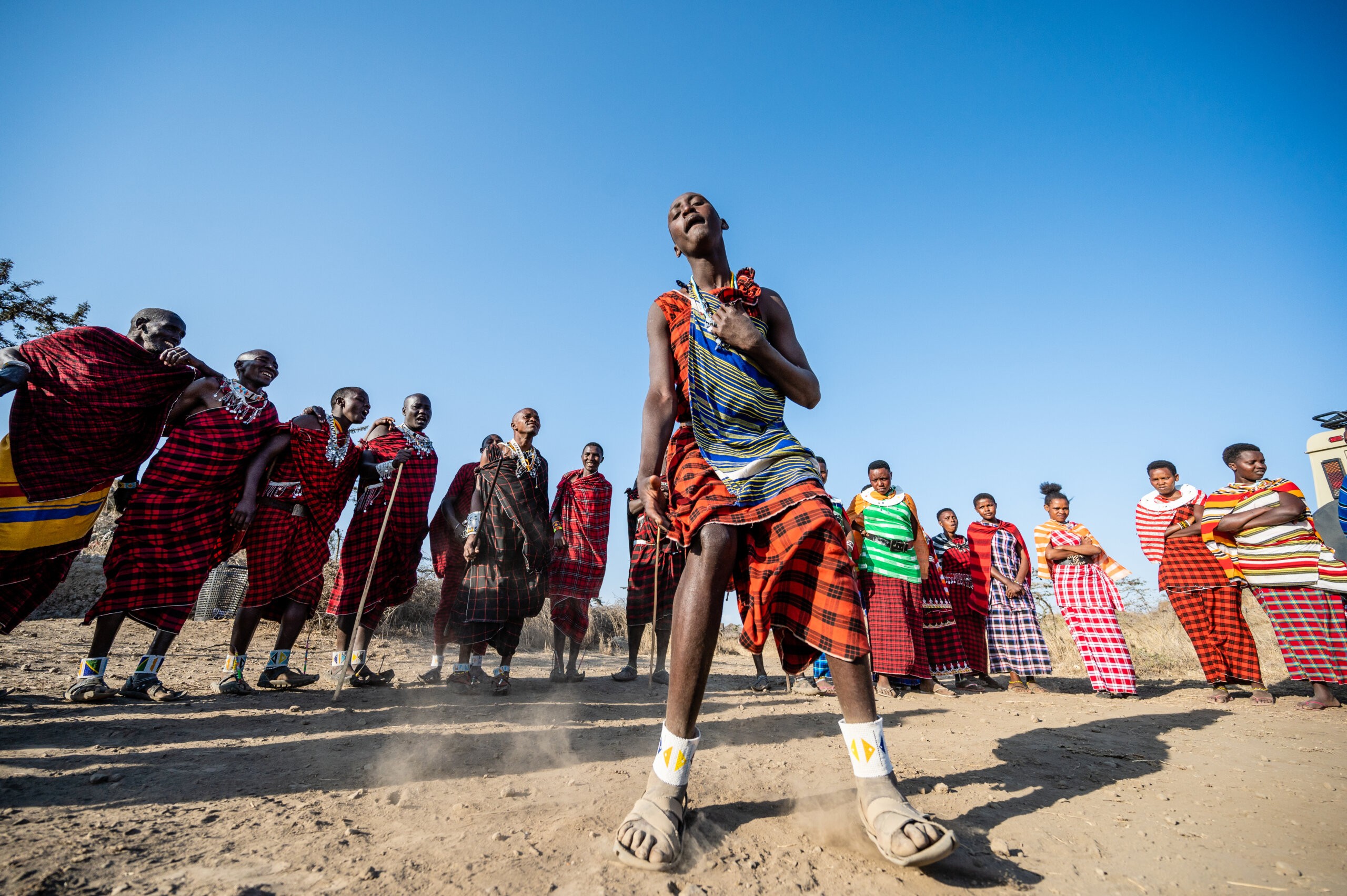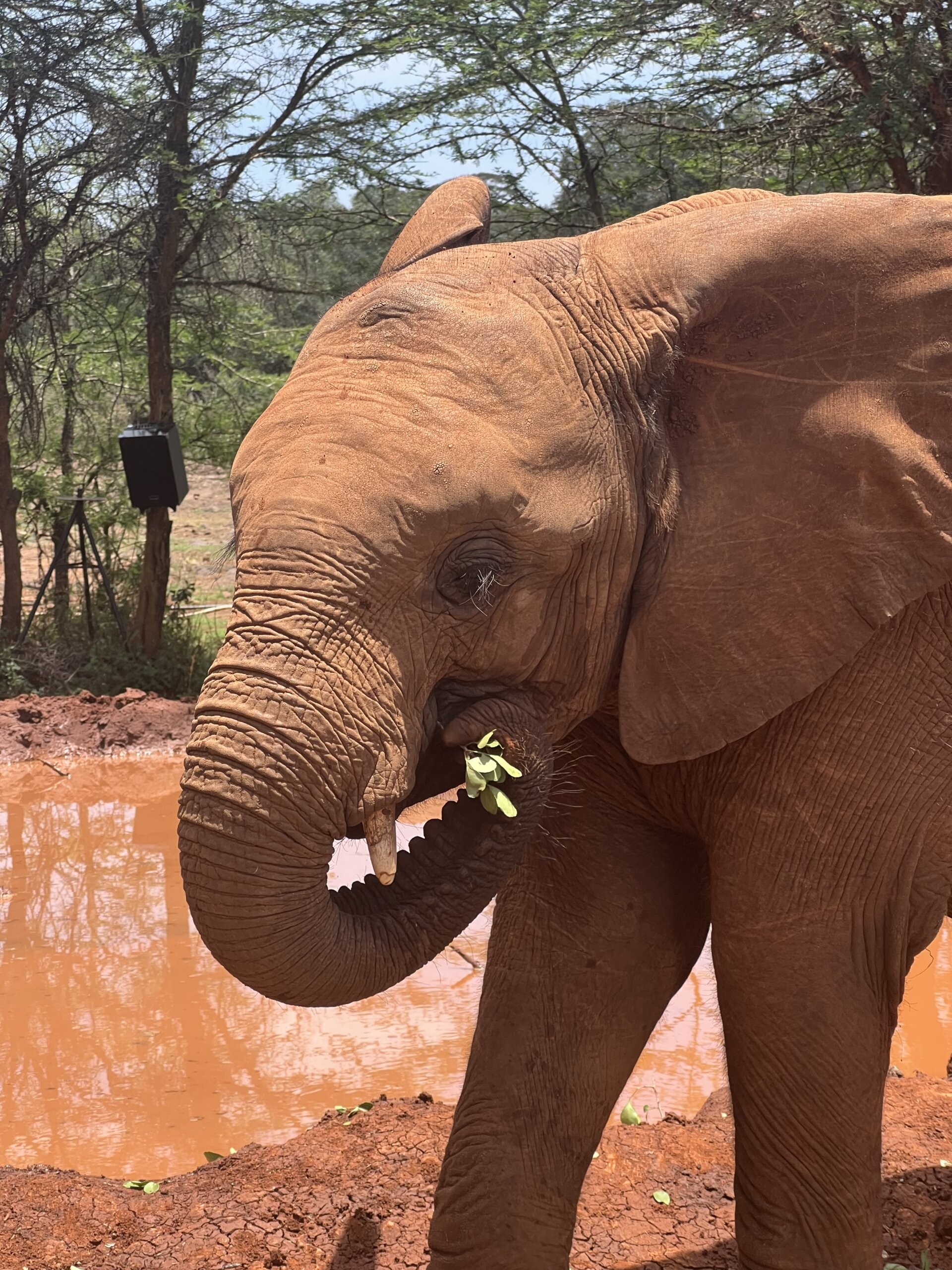Are you dreaming of an African safari but can’t decide between Kenya and Tanzania? SIXT.VN can help you plan the perfect East African adventure. This guide compares the highlights of each destination, allowing you to make an informed decision based on your preferences. Let’s embark on a journey of wildlife encounters, cultural immersions, and breathtaking landscapes, ensuring an unforgettable safari experience in either of these iconic safari destinations.
1. What Are The Key Differences Between Kenya And Tanzania Tourism?
The primary distinction lies in the safari experience: Tanzania boasts the Serengeti and Ngorongoro Crater, while Kenya offers the Maasai Mara and diverse landscapes. According to the Kenya Tourism Board, Kenya is more accessible with direct flights to Nairobi, while Tanzania is known for its vast wilderness and the Great Migration. Tanzania is also famed for Mount Kilimanjaro and Zanzibar’s beaches, enhancing its tourism appeal.
Expanding on that, here’s a detailed breakdown:
- Wildlife: Both countries offer fantastic wildlife viewing, but Tanzania is home to a larger animal population.
- Scenery: Kenya has diverse landscapes, including mountains, deserts, and coastlines. Tanzania boasts Mount Kilimanjaro and the Serengeti plains.
- Accessibility: Kenya is easier to access with direct flights from major international hubs.
- Cost: Kenya generally offers more budget-friendly options compared to Tanzania.
- Experiences: Tanzania provides immersive cultural experiences with tribes like the Maasai and Hadzabe.
2. Which Country, Kenya Or Tanzania, Offers The Best Safari Experience?
Tanzania typically offers a more immersive safari experience due to its larger national parks and abundant wildlife. The Serengeti is vast and teeming with animals, offering unparalleled game viewing opportunities. However, Kenya’s Maasai Mara is famous for the Great Migration, when millions of wildebeest and zebras cross the Mara River.
To further clarify, consider these aspects:
- Serengeti vs. Maasai Mara: The Serengeti is larger and less crowded than the Maasai Mara.
- Great Migration: Both parks offer the chance to witness this spectacle, but the Serengeti hosts it for a longer period.
- Ngorongoro Crater: This unique conservation area in Tanzania offers incredible wildlife viewing in a concentrated area.
- Rhino Sightings: Kenya often provides better rhino sightings, particularly in Nairobi and Nakuru National Parks.
3. What Are The Benefits Of Choosing Kenya For Tourism?
Kenya offers easy accessibility with direct flights to Nairobi and a diverse range of activities beyond safaris, such as cultural experiences and coastal adventures. Kenya’s established tourism infrastructure makes it a more comfortable option for first-time visitors.
Here are some specific advantages:
- Direct Flights: Kenya is easily accessible from major international hubs.
- Affordable Options: Kenya generally offers more budget-friendly safaris and accommodations.
- Nairobi National Park: Experience wildlife viewing with the city skyline as a backdrop.
- Rhino Conservation: Visit the Sheldrick Wildlife Trust to see orphaned elephants and rhinos.
- Cultural Immersion: Engage with local communities and learn about their traditions.
 Black Rhino in Nairobi National Park
Black Rhino in Nairobi National Park
4. What Are The Benefits Of Choosing Tanzania For Tourism?
Tanzania boasts incredible wildlife viewing opportunities, including the Great Migration and the unique Ngorongoro Crater, and is home to Mount Kilimanjaro and Zanzibar. According to the Tanzania Tourist Board, the country is dedicated to conservation and sustainable tourism.
Key benefits include:
- Serengeti National Park: A vast, world-renowned safari destination.
- Ngorongoro Crater: A unique ecosystem with abundant wildlife.
- Great Migration: Witness millions of wildebeest and zebras on their annual journey.
- Mount Kilimanjaro: Climb Africa’s highest peak.
- Zanzibar: Relax on pristine beaches and explore the island’s rich history.
5. How Does The Wildlife Viewing Experience Differ Between Kenya And Tanzania?
In Tanzania, the Serengeti offers vast open plains and a greater abundance of wildlife, while Kenya’s Maasai Mara provides a more concentrated viewing experience, especially during the Great Migration. Tanzania also offers unique opportunities to see chimpanzees in Gombe Stream and Mahale Mountains National Parks.
Consider these aspects:
- Wildlife Density: Tanzania generally has a higher wildlife density, especially in the Serengeti.
- Migration Focus: Kenya’s Maasai Mara offers concentrated views of the migration, particularly during river crossings.
- Park Size: Serengeti is much larger, offering a sense of vastness and isolation.
- Unique Species: Tanzania offers chances to see chimpanzees, while Kenya is known for rhino conservation efforts.
6. Which Country Offers More Cultural Immersion Opportunities: Kenya Or Tanzania?
Both Kenya and Tanzania offer rich cultural experiences, but Tanzania stands out due to its strong tribal presence. The opportunity to engage with tribes such as the Maasai and Hadzabe provides an immersive cultural experience. In Kenya, Nairobi offers a chance to experience urban life, offering insight into local NGOs and communities.
Here’s a comparison:
- Maasai Culture: Both countries offer Maasai cultural experiences, but Tanzania’s interactions are more immersive.
- Hadzabe Tribe: Tanzania is home to the Hadzabe, one of the last hunter-gatherer tribes.
- Urban Life: Kenya provides a window into the daily lives of Kenyans, particularly in Nairobi.
- Community Projects: Kenya offers opportunities to volunteer and learn about community development projects.
 Maasai Tribe at Osiligiliai Lodge in Tanzania
Maasai Tribe at Osiligiliai Lodge in Tanzania
7. What Are The Accommodation Options Like In Kenya And Tanzania?
Kenya offers a range of accommodations, from budget-friendly lodges to luxury resorts, and is suitable for various budgets. Tanzania also provides diverse accommodations, but it trends toward the higher end, with luxury camps and lodges providing premium experiences.
Here’s a breakdown:
- Kenya: Wider range of budget options, including campsites and guesthouses.
- Tanzania: Focus on luxury accommodations, such as tented camps and high-end lodges.
- Eco-Friendly Lodges: Both countries offer eco-friendly accommodations that prioritize sustainability.
- Unique Stays: Consider staying in a Maasai-owned lodge in Tanzania for a cultural experience.
8. Which Country Is Easier To Travel To And Navigate For First-Time Visitors?
Kenya is generally easier to travel to and navigate due to better infrastructure, more English speakers, and more established tourism services. According to the U.S. Department of State, Kenya’s security is well managed.
Here’s why:
- Infrastructure: Kenya has better-developed infrastructure, making travel easier.
- Language: English is widely spoken in Kenya, facilitating communication.
- Tourism Services: Kenya’s tourism industry is well-established, offering a range of services.
- Accessibility: Direct flights to Nairobi make Kenya more accessible.
9. What Should I Pack For A Safari In Kenya Or Tanzania?
Packing for a safari in Kenya or Tanzania requires consideration for the climate, activities, and cultural norms. Essential items include lightweight clothing, sturdy walking shoes, sunscreen, insect repellent, and a hat.
Here’s a detailed packing list:
| Category | Items | Notes |
|---|---|---|
| Clothing | Lightweight, breathable clothing (khaki, olive, beige) | Long sleeves and pants for sun and insect protection |
| Moisture-wicking t-shirts | Stay cool and dry | |
| Fleece jacket or sweater | For cooler evenings and early morning game drives | |
| Rain jacket | Be prepared for unexpected showers | |
| Footwear | Sturdy walking shoes or hiking boots | Comfortable for walking and game drives |
| Sandals or flip-flops | For relaxing at the lodge | |
| Accessories | Wide-brimmed hat | Sun protection |
| Sunglasses | UV protection | |
| Sunscreen (high SPF) | Protect your skin from the strong African sun | |
| Insect repellent (DEET or Picaridin) | Protect against mosquitoes and other insects | |
| Camera with zoom lens | Capture wildlife sightings | |
| Binoculars | Enhance wildlife viewing | |
| Health | First-aid kit | Include antiseptic wipes, bandages, pain relievers, and any personal medications |
| Anti-malarial medication | Consult your doctor | |
| Documents | Passport, visa (if required) | Ensure validity |
| Travel insurance information | Important for medical emergencies and trip cancellations | |
| Miscellaneous | Headlamp or flashlight | Useful for navigating around the lodge at night |
| Reusable water bottle | Stay hydrated and reduce plastic waste | |
| Adapter for electrical outlets | Type G in Kenya, Types D and G in Tanzania | |
| Cultural Etiquette | Modest clothing for visiting cultural sites | Respect local customs |
| Small gifts for locals (pens, notebooks) | Optional, but appreciated |
10. What Is The Best Time Of Year To Visit Kenya And Tanzania For A Safari?
The best time to visit Kenya and Tanzania for a safari depends on what you want to see. The dry season (June to October) is ideal for wildlife viewing, while the Great Migration in the Maasai Mara peaks in July and August. For Tanzania, the dry season (June to October) is also optimal for wildlife viewing, and the best time to see the wildebeest calving is January to March.
Here’s a seasonal guide:
| Season | Kenya | Tanzania |
|---|---|---|
| Dry Season (Jun-Oct) | Best for wildlife viewing, Great Migration in Maasai Mara (Jul-Aug) | Best for wildlife viewing, Great Migration in Serengeti |
| Wet Season (Nov-May) | Fewer crowds, lush landscapes, bird watching | Green season, fewer tourists, good for bird watching and photography |
| Calving Season (Jan-Mar) | Good for seeing newborn animals | Best time to see wildebeest calving in southern Serengeti |
11. How Much Does A Safari In Kenya Or Tanzania Typically Cost?
A safari in Kenya typically costs between $2,500 and $8,000 per person, depending on the level of luxury and the length of the trip. Tanzania safaris generally range from $3,000 to $10,000 per person, influenced by park fees, accommodation choices, and exclusivity.
Here’s a cost breakdown:
- Budget Safari: $2,500 – $4,000 (Kenya), $3,000 – $5,000 (Tanzania)
- Mid-Range Safari: $4,000 – $6,000 (Kenya), $5,000 – $8,000 (Tanzania)
- Luxury Safari: $6,000 – $8,000+ (Kenya), $8,000 – $10,000+ (Tanzania)
12. Are Kenya And Tanzania Safe Destinations For Tourists?
Both Kenya and Tanzania are generally safe for tourists, but it’s important to take precautions and stay informed about current safety conditions. According to the U.S. Department of State, both countries have travel advisories, so it is important to stay updated with local conditions.
Here are some safety tips:
- Stay Informed: Monitor travel advisories and local news.
- Travel with Reputable Operators: Choose experienced and reliable tour operators.
- Secure Valuables: Keep valuables in a safe place and avoid displaying them in public.
- Avoid Walking Alone at Night: Use taxis or organized transportation after dark.
- Respect Local Customs: Dress modestly and be mindful of local traditions.
13. Can I Combine A Safari In Kenya And Tanzania Into One Trip?
Yes, it is entirely possible to combine a safari in Kenya and Tanzania into one trip, creating a comprehensive East African experience. By carefully planning your itinerary, you can visit the best parks in both countries, witnessing diverse landscapes and wildlife.
Here’s how to plan a combined trip:
- Start in Nairobi or Kilimanjaro: Choose the airport that offers the best flight connections.
- Visit Maasai Mara and Serengeti: These parks share the same ecosystem and are easily accessible to each other.
- Include Ngorongoro Crater: Add a visit to this unique conservation area in Tanzania.
- Consider Zanzibar: End your trip with relaxation on Zanzibar’s beaches.
- Book with a Tour Operator: An experienced operator can handle logistics and border crossings.
14. What Are Some Unique Experiences To Consider In Kenya?
Kenya offers unique experiences such as visiting the Sheldrick Wildlife Trust, biking in Hell’s Gate National Park, and experiencing cultural immersion in Nairobi’s slums. Hot air ballooning over the Maasai Mara provides unparalleled views of the landscape and wildlife.
Here are some highlights:
- Sheldrick Wildlife Trust: Interact with orphaned elephants and rhinos.
- Hell’s Gate National Park: Explore wildlife on a bike.
- Nairobi Slums: Learn about community development projects.
- Giraffe Centre: Feed giraffes and learn about conservation.
- Hot Air Ballooning: Enjoy breathtaking views of the Maasai Mara.
 Orphan Elephants at Sheldrick Wildlife Trust in Kenya
Orphan Elephants at Sheldrick Wildlife Trust in Kenya
15. What Are Some Unique Experiences To Consider In Tanzania?
Tanzania offers unique experiences such as visiting the Hadzabe tribe, experiencing the Maasai culture at Osiligiliai Lodge, and witnessing the Great Migration from a hot air balloon over the Serengeti. Climbing Mount Kilimanjaro is an unforgettable adventure.
Here are some highlights:
- Hadzabe Tribe: Live like a hunter-gatherer for a day.
- Osiligiliai Lodge: Immerse yourself in Maasai culture.
- Hot Air Ballooning: Witness the Great Migration from above.
- Mount Kilimanjaro: Climb Africa’s highest peak.
- Zanzibar: Relax on pristine beaches and explore the island’s history.
16. What Type Of Visa Do I Need To Visit Kenya And Tanzania?
Most nationalities require a visa to visit Kenya and Tanzania. You can obtain a visa on arrival or apply online before your trip. An East Africa Tourist Visa allows you to visit both countries with a single visa.
Here’s what you need to know:
- Kenya: Apply for an e-visa online before your trip.
- Tanzania: Apply for an e-visa online or obtain a visa on arrival.
- East Africa Tourist Visa: Valid for Kenya, Tanzania, and Uganda.
- Check Requirements: Verify visa requirements based on your nationality.
17. What Vaccines And Health Precautions Should I Take Before Visiting Kenya And Tanzania?
Before visiting Kenya and Tanzania, consult your doctor about necessary vaccines and health precautions. Recommended vaccines include yellow fever, typhoid, hepatitis A, and malaria prophylaxis.
Here’s what to consider:
- Yellow Fever Vaccine: Required for entry into both countries.
- Typhoid and Hepatitis A Vaccines: Recommended for protection against food and waterborne diseases.
- Malaria Prophylaxis: Essential to prevent malaria, a common disease in the region.
- Consult Your Doctor: Discuss your travel plans and health history with a healthcare professional.
- Travel Insurance: Ensure your insurance covers medical emergencies and evacuation.
18. How Can SIXT.VN Help Plan My Trip To Kenya Or Tanzania?
SIXT.VN offers comprehensive travel planning services to help you create the perfect safari in Kenya or Tanzania. We provide customized itineraries, accommodation booking, transportation, and expert guidance to ensure a seamless and unforgettable experience.
Here’s what we offer:
- Customized Itineraries: Tailored to your interests and budget.
- Accommodation Booking: Wide range of options, from budget-friendly lodges to luxury resorts.
- Transportation: Reliable and safe transportation services.
- Expert Guidance: Experienced travel consultants to assist with all your planning needs.
- 24/7 Support: Dedicated support throughout your trip.
19. What Are Some Common Misconceptions About Safaris In Kenya And Tanzania?
Some common misconceptions include the idea that safaris are only for the wealthy, that they are dangerous, or that you will see animals at every moment. Safaris can be tailored to various budgets, safety is a priority with experienced guides, and wildlife sightings require patience and skill.
Here are some common myths:
- Safaris are only for the wealthy: There are budget-friendly options available.
- Safaris are dangerous: Experienced guides ensure your safety.
- You will see animals at every moment: Wildlife sightings require patience and skill.
- The Great Migration is always visible: The migration is a seasonal event and not always guaranteed.
20. What Should I Know About Tipping Etiquette In Kenya And Tanzania?
Tipping is customary in Kenya and Tanzania to show appreciation for good service. Tip guides, drivers, porters, and hotel staff based on the quality of service.
Here’s a tipping guide:
| Service | Tip Amount | Notes |
|---|---|---|
| Safari Guide | $15-20 per day per person | Based on experience and knowledge |
| Driver | $10-15 per day per person | For safe and reliable transportation |
| Porter | $1-2 per bag | For carrying luggage |
| Hotel Staff | $1-2 per service | For excellent service at hotels and lodges |
| Restaurant Staff | 10-15% of the bill | For good service in restaurants |
21. What Are The Most Popular National Parks To Visit In Kenya And Tanzania?
In Kenya, popular national parks include Maasai Mara, Amboseli, Lake Nakuru, and Nairobi National Park. In Tanzania, Serengeti, Ngorongoro Crater, Tarangire, and Lake Manyara are popular choices.
Here’s a detailed list:
| Kenya | Tanzania |
|---|---|
| Maasai Mara | Serengeti |
| Amboseli | Ngorongoro Crater |
| Lake Nakuru | Tarangire |
| Nairobi National Park | Lake Manyara |
| Tsavo East/West | Arusha National Park |
22. What Are Some Sustainable Tourism Practices To Consider When Planning A Safari?
When planning a safari, consider sustainable tourism practices to minimize your impact on the environment and support local communities. Choose eco-friendly accommodations, respect wildlife, and support local businesses.
Here are some tips:
- Choose Eco-Friendly Lodges: Look for accommodations with sustainable practices.
- Respect Wildlife: Maintain a safe distance and avoid disturbing animals.
- Support Local Businesses: Purchase souvenirs from local artisans and businesses.
- Reduce Waste: Bring a reusable water bottle and avoid single-use plastics.
- Conserve Water and Energy: Be mindful of your water and energy usage.
23. How Can I Ensure I Have An Ethical Wildlife Encounter?
To ensure an ethical wildlife encounter, choose tour operators that prioritize animal welfare, avoid activities that disturb or endanger wildlife, and respect their natural habitat. Never feed animals or encourage them to approach for photos.
Here’s how to ensure ethical encounters:
- Choose Ethical Tour Operators: Look for companies committed to animal welfare.
- Avoid Disturbing Wildlife: Maintain a respectful distance and avoid loud noises.
- Do Not Feed Animals: Feeding can disrupt their natural behaviors.
- Respect Habitats: Stay on designated paths and avoid damaging vegetation.
- Educate Yourself: Learn about the local wildlife and conservation efforts.
24. What Are The Transportation Options Within Kenya And Tanzania?
Within Kenya and Tanzania, transportation options include safari vehicles, domestic flights, trains, and buses. Safari vehicles are essential for game drives, while domestic flights are convenient for long-distance travel.
Here’s a breakdown:
- Safari Vehicles: 4×4 vehicles are best for navigating rough terrain.
- Domestic Flights: Save time and avoid long drives between parks.
- Trains: Scenic train journeys are available in some areas.
- Buses: Affordable but can be slow and crowded.
- Private Transfers: Convenient for door-to-door service.
25. What Activities Can I Combine With A Safari In Kenya Or Tanzania?
Combine your safari with activities such as hiking Mount Kilimanjaro, relaxing on Zanzibar’s beaches, visiting cultural sites, or exploring local markets. Kenya offers opportunities for bird watching, while Tanzania provides unique cultural experiences.
Here are some ideas:
- Mount Kilimanjaro: Challenge yourself with a climb to Africa’s highest peak.
- Zanzibar: Relax on pristine beaches and explore the island’s history.
- Cultural Tours: Visit local villages and learn about tribal customs.
- Bird Watching: Kenya is a bird watcher’s paradise with diverse species.
- Scuba Diving: Explore the underwater world off the coast of Zanzibar.
26. What Are The Entry And Exit Requirements For Kenya And Tanzania?
Entry and exit requirements include a valid passport, visa (if required), and proof of onward travel. Ensure your passport has at least six months of validity remaining.
Here’s a checklist:
- Valid Passport: Ensure at least six months of validity.
- Visa: Apply online or obtain a visa on arrival.
- Proof of Onward Travel: Show a return ticket or onward travel arrangements.
- Vaccination Certificate: Yellow fever vaccination certificate may be required.
- Customs Declaration: Declare any valuables or restricted items.
27. What Types Of Food Can I Expect To Encounter In Kenya And Tanzania?
In Kenya and Tanzania, expect to encounter a variety of local dishes such as ugali, sukuma wiki, nyama choma, and chapati. Seafood is popular along the coast, while vegetarian options are widely available.
Here are some common dishes:
- Ugali: A staple made from maize flour.
- Sukuma Wiki: Collard greens cooked with onions and tomatoes.
- Nyama Choma: Grilled meat, often goat or beef.
- Chapati: A type of flatbread.
- Pilau: Rice cooked with spices and meat or vegetables.
28. What Are The Local Languages Spoken In Kenya And Tanzania?
The official languages are Swahili and English. Swahili is widely spoken, and learning a few basic phrases can enhance your interactions with locals.
Here are some useful phrases:
- Jambo: Hello
- Asante: Thank you
- Karibu: Welcome
- Habari: How are you?
- Sawa: Okay
29. What Currency Is Used In Kenya And Tanzania?
The currencies used are the Kenyan Shilling (KES) and Tanzanian Shilling (TZS). US dollars are widely accepted, but it’s useful to have local currency for small purchases.
Here’s what you need to know:
- Kenyan Shilling (KES): Used in Kenya.
- Tanzanian Shilling (TZS): Used in Tanzania.
- US Dollars: Widely accepted, especially in tourist areas.
- Credit Cards: Accepted in major hotels and restaurants.
- ATMs: Available in cities and towns.
30. How Can I Get Around Safely In Urban Areas?
To get around safely in urban areas, use reputable taxi services, avoid walking alone at night, and be aware of your surroundings. Keep valuables out of sight and avoid displaying expensive jewelry.
Here are some safety tips:
- Use Reputable Taxis: Uber and Bolt are reliable options.
- Avoid Walking Alone at Night: Use transportation after dark.
- Be Aware of Your Surroundings: Pay attention to your environment.
- Keep Valuables Out of Sight: Avoid displaying expensive items.
- Stay in Well-Lit Areas: Choose well-lit and populated routes.
In conclusion, whether you choose Kenya or Tanzania for your safari adventure depends on your personal preferences and priorities. Both countries offer unparalleled wildlife viewing, cultural experiences, and breathtaking landscapes. Let SIXT.VN help you plan the perfect trip, ensuring an unforgettable journey in East Africa. Contact us at +84 986 244 358 or visit SIXT.VN to learn more about our comprehensive travel services.



